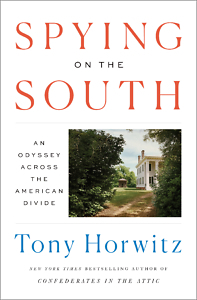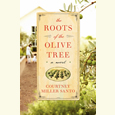Taking Stock of the South
Tony Horwitz revisits the complex character of life below the Mason-Dixon Line
“Let the reader understand that he is invited to travel in company with an honest growler.” Thus began a series of dispatches from Frederick Law Olmsted in the New York Daily Times circa 1854—dispatches that were published in book form a century later. Tony Horwitz first read The Cotton Kingdom as a college student in 1980 and rediscovered it recently during a purge of overflowing bookshelves in his New England home. In Olmsted, Horwitz immediately recognized a kindred spirit.

A former international correspondent himself, Horwitz rose to literary fame in the late 1990s with the acclaimed bestseller Confederates in the Attic, a whimsical chronicle of his exploration of the Lost Cause myth that is most memorable for his account of embedding with a peculiar cast of obsessive “hard-core” Civil War re-enactors who compete to see who can best resemble a starving Johnny Reb living on scant biscuits and hardtack through years of endless marching and sleeping on the ground.
“Traveling about, without definite aim gives me an entirely new appreciation of the attachment of nomad tribes to their mode of life,” Olmsted wrote. His stories “stirred the nomad in myself,” Horwitz writes, and inspired him to re-enact Olmsted’s journey through the South in the years leading up to the Civil War. Horwitz compares Olmsted’s observations to his own, examines what has changed, and explores the enduring personality and culture of the region.
 Horwitz’s journey resembles Olmsted’s in more than geography: our country’s ideological divisions seem again to be strongest and most troubling on opposite sides of the Mason-Dixon Line. “This journey had also taken Olmsted across the nation’s enduring fault line—between free and slave states in his time and red and blue states in mine,” Horwitz writes. “No current issue carried the moral and explosive force of slavery. But there were inescapable echoes of the 1850s: extreme polarization, racial strife, demonization of the other side, embrace of enflamed opinion over reasoned dialogue and debate.”
Horwitz’s journey resembles Olmsted’s in more than geography: our country’s ideological divisions seem again to be strongest and most troubling on opposite sides of the Mason-Dixon Line. “This journey had also taken Olmsted across the nation’s enduring fault line—between free and slave states in his time and red and blue states in mine,” Horwitz writes. “No current issue carried the moral and explosive force of slavery. But there were inescapable echoes of the 1850s: extreme polarization, racial strife, demonization of the other side, embrace of enflamed opinion over reasoned dialogue and debate.”
In the years since Confederates in the Attic became required reading for Civil War buffs, much has changed about the way Americans view the Old South. What seemed appropriately comic and whimsical when that book was published in 1998 now seems much more intimately entwined with the darker strains of Confederate history and iconography. This shift was doubtlessly in Horwitz’s mind as he set off on the journey he describes in Spying on the South: An Odyssey Across the American Divide.
Horwitz is a gifted writer with a remarkable knack for juxtaposing the comic and the profane. Above all, he is a good journalist—fair, curious, generous, and as objective as one could possibly be when confronted with perplexing and troubling contradictions. The generous, amiable spirit on display in Horwitz’s sentences no doubt contributes to his reception by the people he’s writing about. A Jewish Yankee, Horwitz can nevertheless walk into a random bar in West Virginia or Kentucky and be welcomed immediately by locals eager to share their stories and invite him to explore the eccentricities of their towns and regions.
Horwitz journeys through West Virginia and Kentucky, across Tennessee from Nashville to Memphis, down the Mississippi on a riverboat to New Orleans, and west into Texas. At each stage of the journey, he discovers remarkable parallels with Frederick Olmsted’s observations but also critical differences which suggest both progress and regression. The characters Horwitz encounters are every bit as memorable as those of Confederates in the Attic, though far more diverse and intriguing.
Much of what he discovers can be summarized in these words of a tour guide at White Hall in Kentucky, the home of Cassius Clay—the antebellum politician and planter, not the boxer better known as Muhammad Ali. Clay was an antislavery activist who nevertheless lived the life of the landed gentry and held toxic views on violence and the treatment of women. “He wasn’t a saint, not even close,” the tour guide tells Horwitz. “But all those contradictions he’s struggling with, it’s the human story, on a big scale and a big stage.” The human story is exactly what Horwitz aims to tell in Spying on the South, a book which is as pleasurable to read as it is often troubling, and, above all, timely.

Ed Tarkington’s debut novel, Only Love Can Break Your Heart, was published by Algonquin Books in January 2016. He lives in Nashville.


